We all know what it’s like to get sick and have that irritating cough that just doesn’t seem to go away. Well, what about when you’re a marine mammal that doesn’t breathe through a mouth? Dolphins breathe air through their blowhole which is located on the top of their head. What is interesting though is that dolphins can still experience respiratory irritation which would result in the equivalent of a person sneezing or coughing. For dolphins though, this coughing experience is called chuffing.
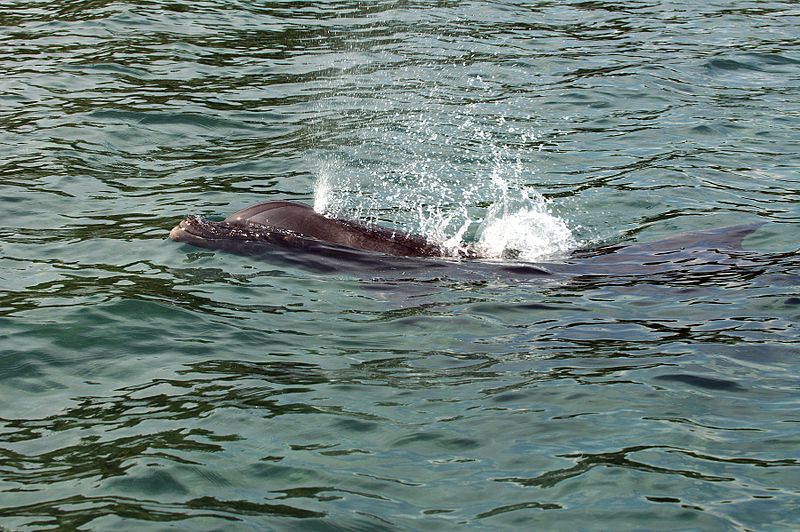
Why Chuff?
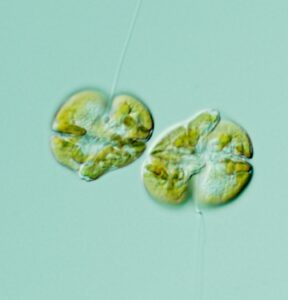
Chuffing can be seen during harmful algal blooms, and in this case the main culprit behind these blooms is a species of phytoplankton known as Karenia brevis. K. brevis can be found in Sarasota Bay waters at any point in time, but when the population of these phytoplankton skyrockets, blooms occur and can cause a variety of problems including massive fish kills due to anoxia (oxygen deficient waters) or exposure to a toxin that these little phytoplankton produce. They produce neurological toxins known as brevetoxins and when K. brevis breaks apart (which can happen by waves crashing), they release this toxin into the air. When people are exposed to this toxin, they can experience severe respiratory irritation. If you have asthma while all this is going on, it’s best to avoid the beach because these toxins can cause some serious illness for people with chronic respiratory issues.
Follow That Dolphin!
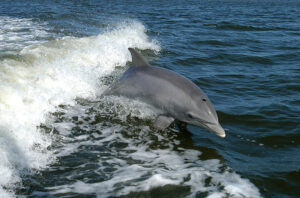
The researchers performed behavioral follows of bottlenose dolphins in Sarasota Bay, Florida. This involves using a boat to follow a pod of dolphins and selecting a particular individual from the group that can be easily identified from the others (an example of such a feature would be any markings on a dolphin’s dorsal fin). After following the dolphins for a period of 15 minutes to ensure that the dolphin being observed was not trying to avoid the boat, behavior data was recorded. Some of the behaviors seen include changes in swimming direction, socialization with other dolphins, foraging for food, chuffing, and time between breaths taken. Observations were taken during a 2005 K. brevis bloom and during inter-bloom conditions where K. brevis was present at background concentrations (normal levels).
Is It Just a Cough?
They found that chuffing occurred 10 times higher in dolphins during the bloom compared to dolphins observed during normal K. brevis population levels. While it’s clear that the toxins from K. brevis can enter the respiratory pathway of a dolphin, what is unknown is how much these toxins can be absorbed into their body by tissues in their airway. Dissolved brevetoxins in the water column will rapidly attach to air bubbles moving toward the surface. As these bubbles burst, the toxins are released into the air which can make the concentrations of the toxin in the air up to 50 times greater than in the water column below. This is concerning though because exposure to these blooms for long periods of time, or even in cycles, could have long term health impacts on these dolphins.
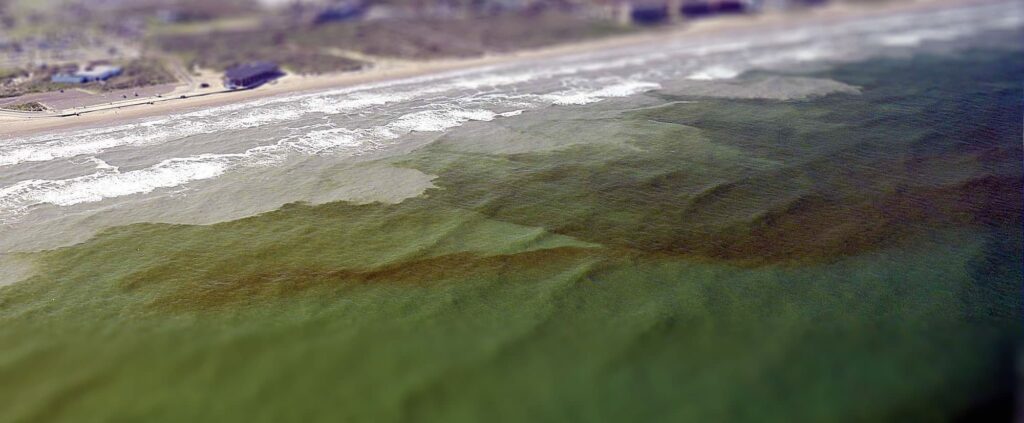
Paper: Fire, S. E., Miller, G. A., & Wells, R. S. (2020). Explosive exhalations by common bottlenose dolphins during Karenia brevis red tides. Heliyon, 6(3), e03525.
Hello! I’m a PhD student at the Florida Institute of Technology. The lab I work in focuses on ecological engineering along with marine corrosion and biofouling control. I’ve enjoyed working in the fields of environmental education and outreach. When I’m not working in the lab, I enjoy reading, volleyball, and photography.


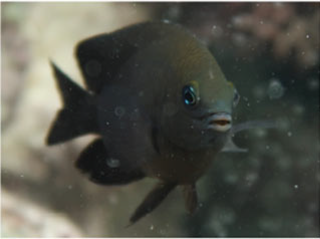
I observed a large dolphin cuffing this morning 0730 . It was continuous for about 30 minutes while he was swimming away about a one quarter of a mile and heard him then spotted him. Reported to FWL this morning to keep a look out. This was in Bayou Grande near the Pensacola NAS East marina. Jones Point.
I heard a dolphin “chuffing” in rgw very early morning hours, around 2 AM, of 12/29/2020 in the Barge or “Rim” canal in PGI ,FL (Punta Gorda ) which runs along the mangroves forest on the South side of Charlotte Harbor.